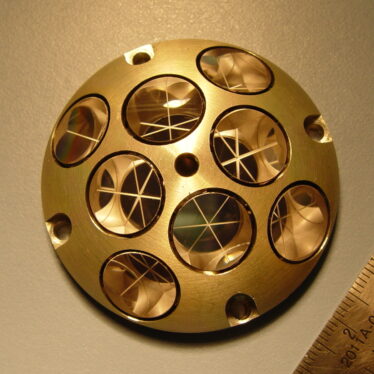5 min read
Preparations for Next Moonwalk Simulations Underway (and Underwater)

“[On December 15, 1941] a few shivering, startled Southerners from Langley, the vanguard of those in the Power Plants Division transferring to Cleveland, arrived in the biggest snowstorm in years,” recalled former receptionist Mary Louise Gosney. This vanguard was the first large group of NACA employees to relocate from the Langley Memorial Aeronautical Laboratory to the new Aircraft Engine Research Laboratory (AERL). As construction of the AERL proceeded over the next two years, larger factions followed suit. Langley employees not only designed and constructed the AERL but formed the core of the Laboratory’s leadership and research staff for three decades.
For the newcomers, the mid-December snowstorm was a dramatic change from Virginia, where temperatures had reached 60 degrees Fahrenheit just days before. The challenge of acclimation to the northern climate, however, paled in comparison to the tumult resulting from Japan’s attack on Pearl Harbor and the Philippines just eight days before. The United States was now involved in World War II on two fronts, and there was a new urgency to get the NACA’s new engine research laboratory operational. The military was relying on the AERL to resolve a host of propulsion issues for its aircraft.
Nearly a year beforehand, in January 1941, Langley construction engineer Charles Herrmann had relocated to Cleveland with Helen Ford, an administrative assistant from NACA Headquarters.
From a 19th-century farmhouse on the barren AERL site, they managed the construction contracting and inspections. Meanwhile, in a room above Langley’s Structural Research Laboratory, a team of civil engineers designed the AERL’s test facilities and other structures. In August 1941, the NACA decided to transfer the Chief of Langley’s Construction Division, Edward Raymond Sharp, to Cleveland to expedite the work.

The Langley arrivals of December 1941, which included inspectors, engineers, draftsmen, mechanics, and administrative staff, were stationed in temporary offices inside the aircraft hangar—the only completed building. Sharp negotiated a key contract with a new construction company in the ensuing weeks that provided a breakthrough in the work. The first test facility was operational in May 1942. One after another, the other buildings and facilities were completed during the following year, and the former Langley staff left the hangar for their permanent offices.
In the fall of 1942, units of the Langley engine research staff began transferring to Cleveland. What had been modest-size sections in Langley’s Power Plants Division were expanded to full divisions in Cleveland. These divisions, led by experienced Langley engineers, included Addison Rothrock’s Fuels and Lubrication Division, Benjamin Pinkel’s Thermodynamics Division, Ernest Whitney’s Engine Installation Division, Charles Moore’s Engine Research Division, Oscar Schey’s Supercharger Division, and Joseph Vensel’s Flight Research Division.

In a somewhat surprising move, the NACA assigned construction manager Ray Sharp the responsibility for running the laboratory on a permanent basis. At Langley and Ames, technically skilled engineers performed that task. Sharp, who had a law degree but no formal scientific or engineering background, was assisted by Executive Engineers Carlton Kemper and Addison Rothrock. Sharp managed the day-to-day activities, while Rothrock and Kemper supervised the research. In 1949, Abe Silverstein, who had helped design and operate Langley’s Full Scale Wind Tunnel, became Chief of Research.
Although the AERL was continually hiring new researchers in the 1940s and 1950s, the ex-Langley personnel provided the laboratory’s backbone. With the arrival of the newcomers, more and more of the Langley veterans moved into the management ranks. Nearly all of the division chiefs and upper-management positions during the NACA era were occupied by former Langley people.
The relatively small size of the AERL staff and the fact that many of them were new to northeast Ohio resulted in a close community. Everyone knew nearly everyone else, families were started, and lifelong friendships formed. Sharp and his wife Vera were parental figures who looked after the employees and participated in the staff dances, sporting events, and other social activities.

The transition from the NACA to NASA in 1958 brought a number of changes to the organization, including the transfer of Silverstein and a number of other key Lewis employees to Headquarters and Langley’s Space Task Group. There was also a shift from the NACA’s mostly in-house research to NASA’s management of external development contracts. The new space agency also dramatically increased the size of its staff in the early 1960s. Silverstein, who replaced Sharp as Director in 1961, knew the importance of camaraderie and successfully encouraged the older NACA veterans to interact socially with the new recruits.
As NASA’s budgets decreased in the late 1960s and early 1970s, the era of Langley’s influence on Lewis came to a close. To reduce its payroll, NASA began to offer employees incentives to retire. The Langley expatriates—many of whom had over 30 years of service—ebbed away during the final years of the Apollo program. The Center struggled for nearly a decade to redefine itself and its culture.
Langley’s legacy is still visible at the Center today in its inductees into the Glenn Hall of Fame, a historic district containing the original facilities, and the campus’s lack of sidewalk plots or tree lawns. The Southerners had not anticipated the need to plow snow when designing the laboratory.
Robert S. Arrighi
NASA Glenn Research Center
This article originally appeared in NASA History News & Notes, Volume 33, Number 4, Fourth Quarter 2016.
https://www.nasa.gov/centers-and-facilities/glenn/glenn-history/nasa-glenns-langley-legacy/











